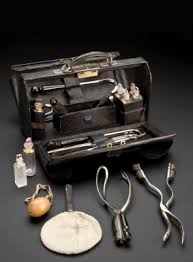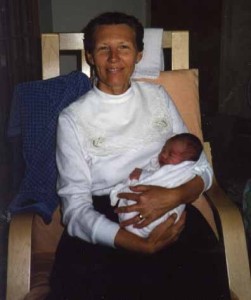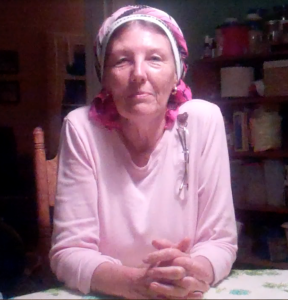
Part 2 (of 2)
Historical & contemporary quotes by doctors about midwives over the
last 2 centuries
on the topic of the
“the midwife problem”
The controversy within the American medical profession over what doctors historically called the “female practitioners of midwifery” began in the 18oos and simmered on the back burner for the next 200 years. It finally burst into flames in 1910 when the obstetrical profession began to hold annual meetings {Ref #1} that included sessions specifically devoted to the “midwife problem“. This referred to the problem doctors were having in their efforts to eliminate the practice of midwives in the United States.
{ref #1 ~ The American Association for the Study and Prevention of Infant Mortality -AASIM}
Needless to say, various attempts by doctors to solve the “midwife problem” been going on ever since.
Organized Medicine and “Occupational Control”
For those of you who have read Paul Starr’s exhaustive history of medical practice: “The Social Transformation of American Medicine”, will recognize this as an “occupational control” issue as defined by the AMA. This describes the ability to totally control who can practice an occupation or profession, and who can be permanently and legally locked out.
Obviously, midwives have always been on the “locked out” list!
In regard to what is legally defined as “The Healing Arts” (i.e. legislation that concerns the practice of allopathic medicine) medical lobby groups backed by the financial and political resources of the AMA, have successfully exerted total control over their “occupation” for a century or more.
This always includes legally (and often unconstitutionally) eliminating any and all forms of economic competition, no matter how trivial the issue, or how vital those now unobtainable services are to the well-being of the infants and children, childbearing women, the elderly, underserved minorities or those with untreatable chronic diseases.
 Medical lobbies typically achieve this via mammoth campaign contributions by special interest medical groups to influence legislation favorable to their group. This describes getting laws passed that make it harder, or illegal, for practitioners of a “competing” healthcare disciplines to practice.
Medical lobbies typically achieve this via mammoth campaign contributions by special interest medical groups to influence legislation favorable to their group. This describes getting laws passed that make it harder, or illegal, for practitioners of a “competing” healthcare disciplines to practice.
This also includes what is known as “regulatory capture” — getting MDs who belong to the AMA appointed to the governing boards of state regulatory agencies, such as medical, midwifery, nursing, chiropractic and naturopathic boards. This allows doctors to vote down anything that would lessen their occupational control over the practice of allopathic medicine, or reduce their economic “bottom line”.
Last but certainly not least is “yellow journalism“. Over the last century various groups of doctors, and their paid staff of lawyers and public relations expert, make deals with newspapers that they commit to spending a predetermined amount annually on advertising in their newspaper (in one documented instance that was $100,000 {Ref #2} if the paper’s editorial staff agrees to promote the agenda of organized medicine and freeze out all dissenting views and competing practitioners. This type of control over the information made available to the public is also used by pharmaceutical and health insurance companies.
{Re #2 The Social Transformation of American Medicine, 1982 and 2017, p. 265 “Committee on the Cost of Medical Care” CCMC 1926}
This amazingly upsetting and frustrating story is a long way from being over, as attested to by the number of obstetricians who seem to be obsessed with denigrating midwifery and continue to chur out anti-out-of-hospital birth studies that get published in professional journals.
In the last decade alone, this list of obstetrician-authors who regularly publish papers directly antagonists to community-based midwifery have included Amos Grunebaum, Frank Chervenak, Lawrence McCullough, J. Orosz, Birgit Arabin, JR Wax, Robert Brent, Malcolm Levene and Jenny Pang
A brief comment by the editor (that would be me!)

A Contemporary Ray of Hope
in a Still Dark Sky
I am happy to report one small ray of hope that things may getting a little better for women who choose non-medical childbirth services in their home or a free-standing birth center and the professional midwives who provide this form of community-based care.
One tiny step forward for mothers and midwives . . .
An amazing contemporary example that things may finally be moving in a positive direction is happening right now in my very own community. This week (11-30-2022) a non-profit organization called the California Maternal Quality Care Collaborative (CMQCC) hosted an online educational presentation about a very controversial and formerly taboo subject of integrating midwives and doulas into mainstream maternity care.
Personally, I never thought I’d live to see the day when the words: “midwife“, “doula” and “mainstream” were all in the same positive sentence!
But first let tell you a little bit about the CMQCC. It was founded in 2006 at Stanford University School of Medicine as a response to rising maternal mortality and morbidity rates in our state. The CMQCCis a research and educational group:
“committed to ending preventable morbidity, mortality and racial disparities in California maternity care through the use research, quality improvement toolkits, state-wide collaboratives and its innovative Maternal Data Center to improve outcomes for mothers and infants.”
Since CMQCC’s inception, California has seen maternal mortality decline by 65 percent between 2006 to 2016, while the national maternal mortality rate continued to rise!
Let me say that again, as it is so important to those families whose wife or mother did NOT die in childbirth — the coordinated activities of the CMQCC and the California Department of Health reduced maternal mortality by 65% in the last 10 years!
Why the CMQCC matters childbearing women who choose to receive care from midwives and doulas.
This bring us back to the historic and current conflict between doctors and midwives in the US. I describe this as a “Hundred Years War” waged by organized medicine against the profession of midwifery, its individual practitioners, and everything related to out-of-hospital childbirth services.
If and when the Hundred Years War were to actually end, it will be a truly historic occasion, one almost impossible for me to imagine. I was one of those midwives caught up in the “regulatory capture” of our state medical board. The majority of MDs appointed to its governing board are members of the state chapter of the AMA. Organized medicine has been fighting midwifery, and all efforts to licensed non-nurse midwives for decades, while also promoting the arrest and criminal prosecution of lay midwives.
I was one of those midwives. I was arrested in my home in Palo Alto on August of 1991 and criminally prosecuted for 20 months ($40,000 in legal expenses). The charges against me were finally dismissed in April of 1993. The unwillingness of the DA to pursue a criminal case against me, along with an editorial in the San Jose Mercury on Sunday, May 5th, 1993, finally convinced the California Medical Association (i.e. state chapter of the AMA) to stop blocking passage of the Licensed Midwifery Practice Act of 1993 (LMPA), which was signed into law October 11, 1993.
What “burying the hatchet” means to mothers and midwives
The recent presentation by the CMQCC staff also took exception to the historical prejudice by obstetricians against mothers and midwives who don’t choose, or are not affiliated with, obstetrics. The CMQCC established as a professional obligation that obstetricians and the obstetrical staff of hospitals respect the decision of childbearing women, without judgement or negative comments, who planned to give birth in a community settings.
This quality of respect also applies to the collegial relationship between the obstetrical profession and professionally-licensed community midwives. The CMQCC presentation strongly discourages the use of evocative, and often factually incorrect, vocabulary such as “failed home birth” when describing an appropriate hospital transfer, and use of “lay midwife” when the practitioner in question is state licensed and/or nationally-certified midwife.
This would also means making peace with the choice by many healthy childbearing women to have a midwife-attended birth in a non-medical setting as long as things continue to progress normally and mother and baby remain healthy. This always includes timely transfer to obstetrical services as needed.
Accepting midwives and doulas as respected members of the mainstream healthcare system would a truly historic occasion. To the surprise of many, this actually is a science-based response, as the outcomes for intrapartum care as provided by professionally-trained midwives in a non-medical setting (parents’ home or freestanding birth center) are equivalent to hospital-based obstetrics for a similar demographic of healthy childbearing women.
This is a real, but welcomed, turn-around compared to the last four decades. During most of that time, many hospital obstetrical departments in the San Francisco bay area were very vocal and even punitive in their opposed to out-of-hospital childbirth services. Whenever a hospital transfer became necessary, the conversations between attending OBs and midwives were generally very negative or they froze us out altogether.
One way this played out was for the attending OB, and sometimes the L&D nursing staff, to never look at or talk to the midwife while she was present in the room, and repeatedly refer to the intrapartum transfer as a “failed home birth”. These transfers were actually well-timed, since they preserved the welfare of mother and unborn baby. This was obvious, since no one was rushing the mother off to the OR to do an emergency C-section.
I’m sure midwives and obstetricians will always have various differences of opinion, but I can’t thank the staff of the CMQCC for such a boldly advancing the maturation of
but anyone, anywhere that reduces the maternal mortality rate is hero in my book!
So now you know about the CMQCC and can find out more by visiting their website.
Modern Maternity Care
 for Healthy Women
for Healthy Women
with Normal Pregnancies
by Faith Gibson, LM
I ~ The fundamental purpose of maternity care is to protect and preserve the health of already healthy women.
II ~ For an essentially healthy population, the safest and most cost-effective form of maternity care is always the method that provides “maximal results with minimal interventions”. This is a beneficial ratio of interventions to outcomes for each childbearing woman.
III ~ Mastery in normal childbirth services means bringing about a good outcome without introducing any unnecessary harm or unproductive expense.
IV ~ The ideal maternity care system seeks out the point of balance where the skillful use of physiological management and adroit use of necessary medical interventions provides the best outcome with the fewest number of medical and surgical procedures and least expense to the healthcare system.
V ~ Maternity care in a healthy population is ultimately judged by its results — the number of mothers and babies who graduate from its ministrations as healthy, or healthier, than when they started.


